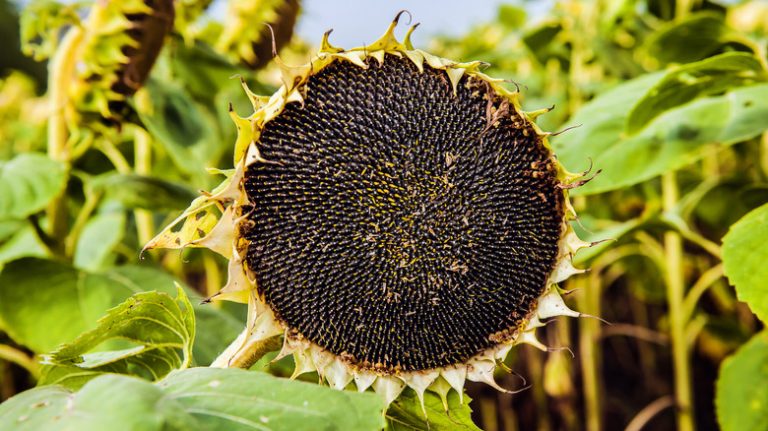If you’re looking for beautiful, vibrant flowers that are relatively easy to care for, Calibrachoa Superbells and Million Bells are excellent choices. These popular plants are celebrated for their bright colors, long blooming period, and compact growth habit. Despite their many benefits, there are a few important factors to consider when growing Calibrachoa to ensure their health and vitality.
One challenge that Calibrachoa plants face is susceptibility to certain diseases. However, by providing proper care and attention, you can minimize the risk of diseases and keep your plants thriving. It’s important to start with healthy plants from reputable sources, as this will greatly reduce the chances of introducing any pathogens. Additionally, provide well-draining potting soil, as overly wet conditions can lead to root rot and other problems.
Fertilizer is essential for promoting robust growth in Calibrachoa. These plants have high nutrient requirements, so it’s crucial to feed them regularly. A balanced, water-soluble fertilizer is recommended, and it’s wise to follow the manufacturer’s instructions for application rates. By fertilizing every two weeks throughout the growing season, you’ll help ensure that your Calibrachoa plants remain healthy and vibrant.
When it comes to growing Calibrachoa, sunlight is another important factor to consider. These plants thrive in full sun conditions, so it’s best to plant them in locations that receive at least six hours of direct sunlight each day. However, certain Calibrachoa cultivars, like Superbells Evening Star, can tolerate some shade. It’s also important to note that Calibrachoa may not perform well in extreme heat or intense sunlight, so provide some afternoon shade if needed.
To keep your Calibrachoa plants looking their best, deadhead them regularly while they’re in bloom. This involves removing the spent flowers, which encourages more blooms and prolongs their overall blooming period. Calibrachoa plants are also well-suited for containers and hanging baskets, so if you want to transplant them, choose a potting mix that drains well and avoid overwatering.
In terms of pests, Calibrachoa plants are generally resistant to most common garden pests. However, they may be susceptible to spider mites, which are tiny sucking insects that can damage the plant’s foliage. Regular monitoring and early intervention can help control spider mites and prevent them from causing significant damage.
When it comes to size and growth habit, Calibrachoa Superbells and Million Bells are relatively compact plants. They typically reach a height of around 6-12 inches and spread about 12-24 inches, making them suitable for both garden beds and containers. These plants are commonly available in a wide range of colors, including pink, red, blue, and yellow, so you can easily find a combination that suits your garden color scheme.
Overall, Calibrachoa Superbells and Million Bells are versatile and beautiful plants that can bring a vibrant display to your garden. With proper care and attention, they can thrive and provide months of blooming enjoyment. Whether you choose to grow them as annuals or perennials, these hardy hybrids are sure to be a standout in your garden.
How to Plant and Grow Calibrachoa Million Bells
If you want to add a pop of color and variety to your garden or hanging baskets, Calibrachoa Million Bells is an excellent choice. This hybrid plant produces an abundance of beautiful and vibrant flowers that will surely catch your eye.
Calibrachoa Million Bells is also known by the name SuperbellsReg and is a part of the SuperbellsReg series. These plants are widely loved for their trailing and spreading growth habit, making them perfect for hanging baskets or as ground cover in flowerbeds.
Before planting Calibrachoa Million Bells, it’s important to select a suitable location. Calibrachoa Million Bells thrives in full sun but can tolerate partial shade. The ideal location should provide at least 6 hours of direct sunlight daily.
When it comes to soil, Calibrachoa Million Bells prefers well-draining soil with a pH between 5.5 and 6.5. You can amend the soil with organic matter or compost to improve drainage and fertility.
Now, let’s move on to the planting process. Start by digging a hole that is twice the width of the plant’s root ball. Make sure to loosen the soil in the hole to encourage root growth.
Before planting, gently remove the plant from its container and loosen the roots. If the root ball is too tight, you can gently tease the roots apart to encourage outward growth.
Place the Calibrachoa Million Bells in the hole and backfill with soil, making sure the plant is at the same level as it was in the container. Firmly press the soil around the plant to eliminate any air pockets that may hinder root development.
Water the newly planted Calibrachoa thoroughly to settle the soil around the roots. Provide plenty of moisture for the first few weeks to help the plant establish itself. Once established, Calibrachoa Million Bells is relatively drought-tolerant, but regular watering is still necessary to maintain healthy growth and blooming.
To encourage continuous blooming, you can apply a liquid fertilizer every week or use slow-release fertilizers according to the package instructions.
When it comes to propagation, Calibrachoa Million Bells can be grown from both seeds and cuttings. If you choose to propagate from cuttings, take stem cuttings in early spring or late summer. You can root the cuttings in a well-draining soil mix and provide bottom heat to speed up the rooting process.
Calibrachoa Million Bells is generally a low-maintenance plant, but it’s important to provide proper care to prevent diseases and ensure optimal growth. Keep an eye out for common issues like fungal diseases, overwatering, and excess moisture, especially in humid conditions.
In colder climates, Calibrachoa Million Bells is mainly grown as an annual and is susceptible to frost. However, in USDA hardiness zones 9 and above, it can be grown as a perennial.
In conclusion, Calibrachoa Million Bells is a beautiful and versatile plant with charming flowers. Whether grown in your garden or hanging baskets, it’s sure to add a splash of color and joy to any space. With the right care and attention, your Calibrachoa Million Bells will thrive and continue to brighten your days for a long time.
What You’ll Learn
By reading this article, you will learn about various aspects of growing Calibrachoa Superbells® and Million Bells®.
You will learn about the importance of proper watering and the amount of sunlight these plants require. You will also learn how to choose the right soil for optimal growth and how to amend it using different sources of organic matter.
You will gain knowledge about the common pests and diseases that can affect these plants and how to manage them effectively. You will also learn about the best practices for pruning and deadheading to maintain the health and shape of the plants.
The article will offer tips on propagation methods such as seedling transplanting and using water-soluble fertilizers for their growth. You will understand the importance of choosing the right companion plants to enhance the overall beauty of your outdoor space.
Additionally, you will learn about the hardiness zones in which Calibrachoa Superbells® and Million Bells® can grow and what conditions they thrive in. The article will provide insights on how to manage excess moisture and prevent root diseases.
You will also learn about the ideal time to plant and the ultimate height and width these plants can reach. The article will guide you on how to determine when the plants need watering by using the finger test method.
Lastly, you will learn about the practice of covering the soil with mulch and how it helps to maintain moisture and keep pests at bay.
Overall, this article will provide you with a comprehensive understanding of how to grow, care for, and maintain Calibrachoa Superbells® and Million Bells®, ensuring that you can enjoy their colorful blooms and stunning foliage for years to come.
What Is Calibrachoa
Calibrachoa is a popular flowering plant that is often used by gardeners to add color and beauty to their outdoor spaces. Also known as Million Bellsreg and Superbellsreg, Calibrachoa is a member of the Solanaceae family and is native to South America.
Calibrachoa plants are known for their ability to thrive in various conditions and tolerate insects and diseases. They are often grown outdoors and come in a variety of colors, ranging from pink and purple to white and yellow.
When it comes to growing Calibrachoa, it is important to provide the plant with its basic needs. This includes well-drained soil, plenty of sunlight, and a regular feeding schedule. The plants can be grown from seeds or cuttings and need to be watered regularly to maintain moisture in their roots. They also require a balanced fertilizer to help them stay healthy.
One of the unique features of Calibrachoa is its ability to be combined with other plants as a companion in landscaping. It can be grown alongside perennials like Bacopa or Sweet Alyssum to create a beautiful color scheme in the garden.
Calibrachoa plants are known for their quick growth. They can grow quickly and fill in large areas, making them a popular choice for hanging baskets and containers. However, they also need to be regularly pruned and deadheaded to maintain their shape and health.
When planting Calibrachoa outdoors, it is important to choose a location that receives plenty of sunlight. The plants also need well-drained soil to prevent root rot and other common diseases. They prefer slightly acidic to neutral soil, so it is important to test the pH level of the soil before planting.
In summary, Calibrachoa is a versatile and beautiful flowering plant that adds color and vibrancy to any outdoor space. With proper care and attention, these plants can thrive and bring joy to gardeners with their stunning blooms.



